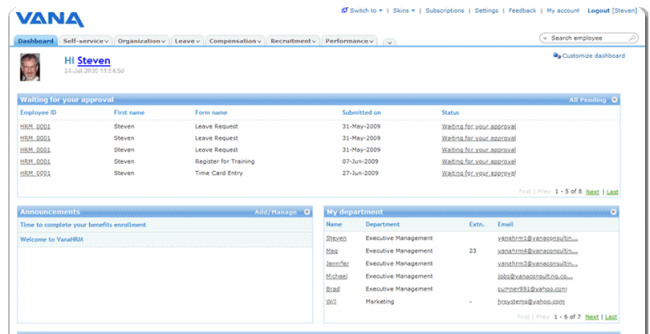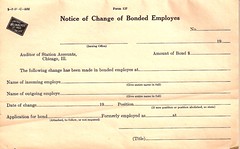NOTE : This Guest Post is from Denis Tournesac, Executive Vice-President OnDemand at NorthgateArinso, a global provider of HR software and service.
In the article, Denis examines the impact of the economic climate on HR’s technology. Denis Tournesac
Denis Tournesac
--------------------------------------------------------------------------------------------------------------------------
The global economic downturn has brought about interesting times for the HR team. We only need to open a newspaper to see stories of job cuts, recruitment freezes and absent bonuses. Employees are worried about the future and the fate of their company, which doesn’t lead to a happy working environment. All this leaves HR dealing with staff cuts, while managing the needs of those people left behind.
When CEOs are looking to cut overheads, justifying the HR team’s time and resources is more important than ever. Reporting is crucial and technology can have an important role to play in helping the HR team operate as efficiently as possible.
However, at a time when budgets are stretched, how can HR choose between the myriad of technology delivery models on offer? The average HR manager wants a global view of HR, as well as in-depth local knowledge and expertise that’s not bogged down in admin. But is it possible to have your cake and eat it too?
Sign of the times
The recession brings with it fewer opportunities for extensive capital expenditure. The initial layout for a big software project can be huge and updating existing systems is seen as a ‘non-urgent’ task that can wait until more secure financial times.
As a result, now is a good time for managers to be looking at alternative models of software delivery, including software delivered ‘on demand’, which can be well suited to recessionary times.
Monthly bills rather than a large initial payout are an attractive proposition for the finance team. OnDemand HR applications are rapidly maturing with multi-tenant systems that leverage scale and the increased acceptance of standardized approaches to HR processes. This combination, in conjunction with faster employee adoption thanks to improved user interfaces, mean that HR managers should be taking a serious look at the OnDemand delivery model to support administrative and value-adding HR processes.
Going on demand
OnDemand technology is nothing new. It comes under several different names – cloud computing, utility computing, software as a service – but all have the same basic attributes. Thanks to companies like salesforce.com, it has already proved it can work for applications like CRM and marketing. However, there’s no reason why HR shouldn’t enjoy the same benefits.
Users are much more demanding of workplace technology than they were a few years ago. As a result, it’s no longer acceptable to go into work the next day and use non-integrated technology and information that is locked away in non-connected systems. Most HR professionals aren’t IT experts, and don’t expect to be bogged down in complex procedures. A good OnDemand system has got to have a good user interface to be successful.
We also expect applications to ‘just work’ – it should be clear how to access information, and how to save and store details. An intuitive system rather than one that requires detailed training is no longer a nice to have, it’s crucial to the success of any IT system used by non-IT people.
Weighing it up
However, it’s important to remember that when it comes to HR support, one size certainly doesn’t fit all. The benefits of an OnDemand system are clear, but a business considering an investment should be careful to look at all available HR service delivery models, and weigh up the right choice for them. Technology has evolved to such a state that OnDemand solutions can seamlessly co-exist with systems which have been in place for years, creating a promising hybrid environment.
A factor to consider when implementing IT to support HR is what it’s actually going to be used for. It’s often assumed that IT will support the processes and admin that so often weigh the HR team down. Traditionally, the biggest benefits for HR have been felt when admin like absence requests, tax forms and employee information have been automated.
This is still the case, but HR directors also need to look at how integrated systems can support the more strategic part of HR. As we’ve already said, talent management is very important to the business during recession, and there’s no reason why this can’t be supported with the right IT platform.
A good example of managing talent adequately can be found in succession planning. Over the next five years, the post-war ‘baby boomer’ generation will retire, and unless companies are prepared, they’ll take with them a huge amount of knowledge and experience. The ‘knowledge crunch’ when baby boomers retire could well hit businesses just as they’re recovering from the recession, and managers need to be preparing whoever will take the place of these managers.
Having it all?
Just because the economy is in a bad way doesn’t mean investment in new solutions to improve efficiency should stop. In fact, it’s more important than ever for reporting to be transparent, in order to improve talent management and competence management processes.
Ultimately, the Company only talks in numbers, and if they can see the direct financial results of the work HR is putting in, the team can justify its role a lot more easily.
The HR director looking to do this should carefully weigh up all the options available. OnDemand technology can help manage costs, and is more easily scalable than some other delivery models. However, different models suit different companies, and OnPremise software has moved a long way from the expensive dinosaur it once was, to become an integral part of hybrid landscapes. What is important is that when the right system is up and running, it helps prove HR’s value to the rest of the business at a time when the team is needed more than ever.
Flickr - AidanBrooksoll, and benefits and looking to a modern SaaS-based platform for more strategic functions like Performance Management, Succession Planning, and Learning and Development.

 Steve
Steve



